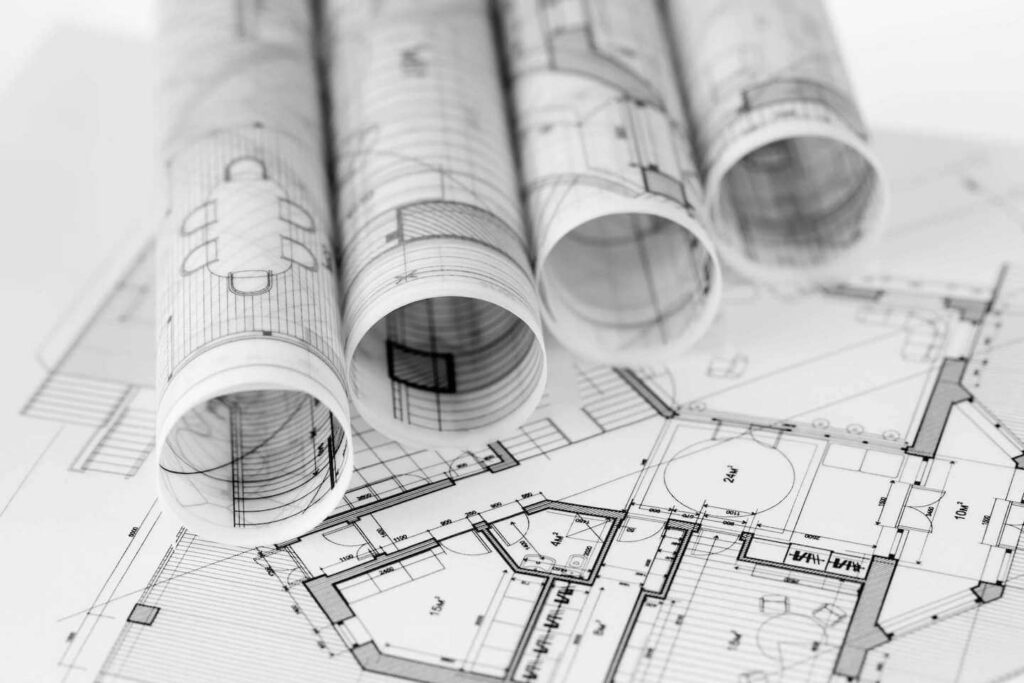Determination of fair value for shares, investment funds and real estate
It is an understandable desire that you want to know and understand the current value of your assets as accurately as possible. Especially if you decide to sell one of your assets, a correct determination of the current market value is important for the optimal success of the sale.
In the case of assets such as securities traded on the stock exchange, the determination of value is usually very simple and transparent. This is because market prices are continuously quoted during trading hours. For investment funds, too, the fund company usually determines the net asset value on each trading day at which you can buy or sell the respective fund.
But what is the situation with the valuation of real estate, i.e. immovable property? Here, prices are not continuously set as they are on the stock markets. Do you intend to sell your property? Are you wondering how a professional values real estate? This article describes the very mature methodology of real estate valuation in the Federal Republic of Germany.
Long tradition in real estate valuation
The heart of a sound property valuation is the systematic recording and processing of property purchase prices. In Germany, we can look back on a long and proven tradition here. As early as December 1893, a technical manual was issued by the Prussian Minister of Finance for the systematic collection of land purchase prices. Its basic principles are still valid today.
In 1918, official valuation offices were established in Prussia. These were the forerunners of today's expert committees for land values. The tasks and powers of the expert committees are regulated in §§ 192 to 199 of the Building Code (BauGB).
Tasks of the expert committees
The nationwide presence of expert committees for property values is an important basis for a serious property valuation. Their central task is to set up and maintain a collection of purchase prices. All property transactions are recorded and evaluated in the collection of purchase prices. On this basis, a lot of data can be derived that is important for a valuation in line with the market. For example, property interest rates. These are interest rates at which the market values of properties are subject to average market interest, in accordance with Section 14 (3) of the Real Estate Valuation Ordinance (ImmoWertV).
The determination of standard land values and the preparation of market reports are also important areas of activity of the expert committees. In § 196 para. 1 BauGB, standard land values are defined as average site values for land based on the collection of purchase prices, taking into account the different state of development.
For the city of Munich, the expert committee for property values publishes the standard land values every two years. In addition, the market report on the Munich property market is published once a year in spring.
Focus on the market value
The legislator places the market value in the focus of the property valuation. The market value is defined in § 194 of the Building Code (BauGB). The main criterion is the price attainable in the ordinary course of business, taking into account the location and other characteristics of the property. It is assumed that both seller and buyer are very well informed and orient themselves to objective decision criteria.
Common methods for determining market value
In the Real Estate Valuation Ordinance, the legislator names three procedures for determining the market value, which are also used worldwide in real estate valuation practice:
- Comparative value method (§§ 15, 16 ImmoWertV)
- Income approach (§§ 17-20 ImmoWertV)
- Real value method (§§ 21-23 ImmoWertV)
Comparative value method
The comparative value method has the greatest significance in practice and is considered the most reliable method for determining the market value. A distinction is made between direct and indirect price comparison.
Direct price comparison (Section 15 (1) ImmoWertV)
The core element is the sales prices actually achieved for properties in the past. Their characteristics, such as location and type of use, must sufficiently match the comparative property.
Indirect price comparison (Section 15 (2) ImmoWertV)
If a direct price comparison is not possible due to a lack of comparative data, the market value can often also be determined by means of an indirect price comparison. In this case, suitable comparison factors are used, for example the standard land values pursuant to § 16 para. 1 sentence 2 ImmoWertV.
Summary
The comparative value method is very well suited for determining the market value, provided that a sufficient number of comparative prices are available for the property to be valued from the collection of purchase prices of the appraisal committees.
2. capitalised earnings method
The capitalised earnings method is used in particular to determine the market value of rented properties. Examples are apartment buildings and commercially used properties. The capitalised earnings value is calculated as the present value of all future income. The Real Estate Valuation Ordinance describes three variants of the capitalised earnings value method:
- General capitalised earnings method (Section 17 (2) sentence 1 ImmoWertV)
- Simplified capitalised earnings method (Section 17 (2) sentence 2 ImmoWertV)
- Income capitalisation approach based on different periodic income (Section 17 (3) ImmoWertV)
The general capitalised earnings value method is described below. It is also referred to as the two-track capitalised earnings method because the building and land value components are determined separately.
2.1. building income value
The building income value is calculated as follows:
a) Calculation of the annual net income
The annual rental income minus the annual management costs results in the annual net income. Management costs include administration costs, loss of rental income risk, maintenance costs and operating costs.
Example
The current market price is to be determined for the sale of an apartment building in Munich. The property generates an annual rental income of € 100,000. Annual management costs of € 12,000 are incurred.
Annual net income = € 100,000 - € 12,000 = € 88,000
b) Net income share of the building facility
The net income share of the building is calculated from the difference between the annual net income and the return on land value.
The land value interest rate is obtained by multiplying the property interest rate by the land value.
Example
Land value of the Munich apartment building = € 2,000,000, property interest rate = 2 %.
Land value interest = € 2,000,000 * 2% = € 40,000
Net income share of the structural plant = € 88,000 - € 40,000 = € 48,000
c) Determination of the capitalised earnings value of the building structure
To determine the income value of the building, the remaining useful life of the building and the property interest rate are first required. Based on this information, the correct present value factor can be derived from the table in the appendix to the Real Estate Valuation Ordinance.
The capitalised earnings value of the building results from the multiplication of the corresponding cash value factor with the net income share of the building.
Example
Property interest rate = 2 %, remaining useful life = 50 years
Present value factor = 31.42 (from table in the appendix to the ImmoWertV)
Income value of the building = 31.42 * 48,000 € = 1,508,160 €.
2.2 Land value
The land value is the value of the land. To determine it, the standard land value determined by the competent expert committee is used. This calculation step is thus carried out in the comparative value procedure described above via an indirect price comparison.
Example
Land value of the Munich apartment building = € 2,000,000
2.3. total return value
The total income value results from the addition of the building income value and the land value.
Example
Building income value = € 1,508,160 (see calculation above), land value = € 2,000,000
Capitalised earnings value of the Munich apartment building = € 1,508,160 + € 2,000,000 = € 3,508,160
If there are other factors influencing the value, these must be taken into account to reduce or increase the value. For example, a mandatory renewal of the roof truss would reduce the total income value.
Summary
The income capitalisation approach can be used to determine a meaningful market value for commercial and private rental properties. The correct use of the decisive parameters is very important. For example, the correct property interest rate is of great importance. Only if the property interest rate really reflects the market interest rate of the property to be valued is the market value determined using the capitalised earnings value method also correct.
3. asset value method
The asset value method plays a role above all in the valuation of individually designed and owner-occupied detached and semi-detached houses. Due to the special individuality of the buildings or the outdoor facilities, there are usually no suitable comparable properties in this case. Thus, the application of the comparative value method is not possible. The capitalised earnings method does not apply either, because the generation of a return through rental income is not intended due to owner occupation. The following steps are necessary to determine the market value according to the asset value method:
3.1 Determination of the production costs of the building structures (§ 22 ImmoWertV)
The normal production costs, which are customary in the market for the new construction of a comparable building, are used for the calculation. Since the production costs vary greatly depending on the building standard, a precise determination of the standard production costs is complex and time-consuming.
3.2 Consideration of the reduction in age value (§ 23 ImmoWertV)
Since the asset value is a current value, the age depreciation must be taken into account. A total useful life of 80 years is usually assumed. Thus, a linear age reduction of 1.25 % of the building production costs is deducted for each year of use. This results in the real value of the building.
3.3 Preliminary tangible value
The provisional real value is calculated by adding the real value of the building to the land value.
3.4 Market adjustment
The location of the property has not yet been taken into account for the calculation of the preliminary asset value. Without a market adjustment, a detached house in a rural area with poor infrastructure, for example, would be valued just as high as an exclusive house in Munich's Herzogpark villa district. This cannot be true, of course. That is why a market adjustment factor calculated by the respective expert committee is taken into account in order to include the local real estate market conditions in the valuation.
Summary
The asset value method is considered the most complex of the three valuation methods. Despite the main criticism that it makes no sense to determine a fair market value with the help of the valuation of building materials, it plays an important role in everyday valuation practice.
Conclusion
A correct property valuation requires a professional analysis and evaluation of all data. If you intend to sell your property, it is important to start the sale with a precisely determined market value.
Because not only a sales price that is set too low has negative financial consequences. Even if the price is set much too high, the market usually punishes this. Potential buyers constantly see prices adjusted downwards due to the lack of buyer demand and become sceptical or want to wait for further price reductions. This delays the sales process considerably. Often the property then has to be completely taken off the market for a longer period of time in order to restart the sales process at a later date with the downwardly adjusted, market-driven price.
No matter for what reason you are selling your property - to realise a profit, because of a change of location, divorce or inheritance - a correct assessment of the market value is of paramount importance for the success of the sale.
Photo credit: Shutterstock, 275799518, Viktoriya

